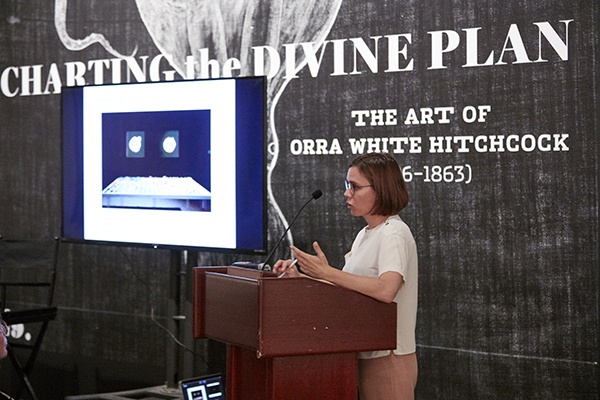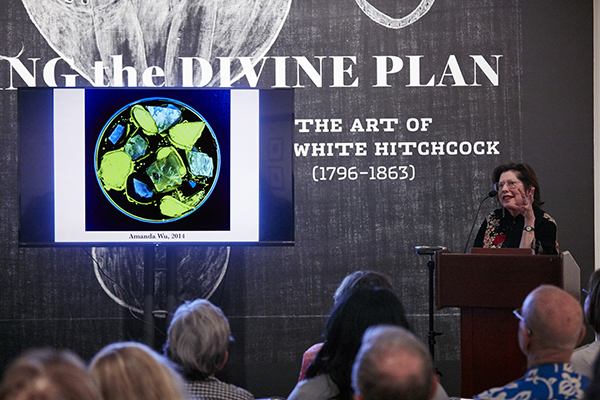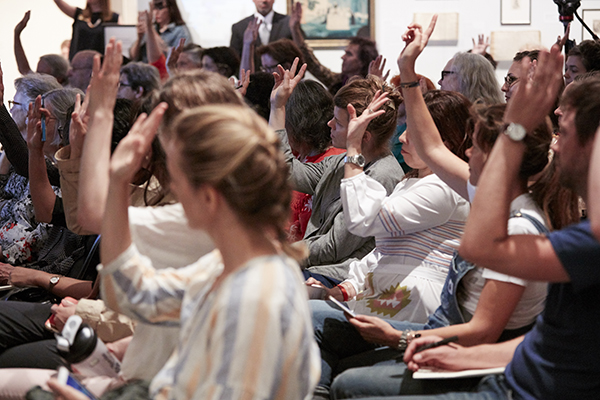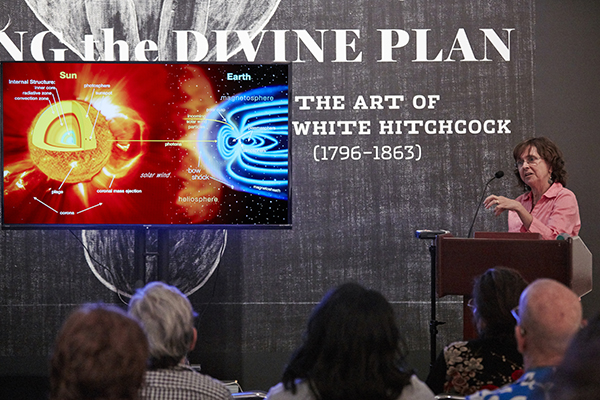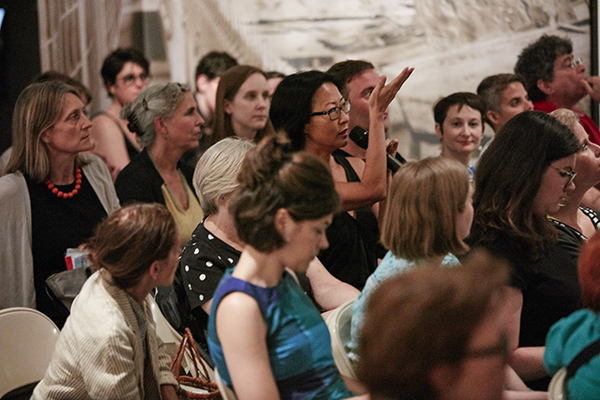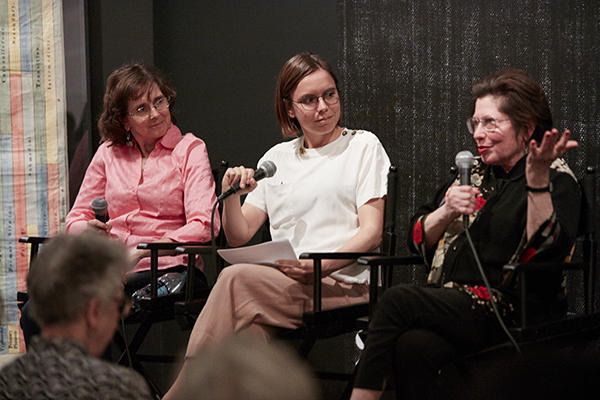**This program is sold out.**
Join us for an evening with contemporary women artists working at the intersection of art, science, and education, inspired by the interdisciplinary nature of the works on view in the exhibition Charting the Divine Plan: The Art of Orra White Hitchcock (1796–1863). Bio Art artist Suzanne Anker and NASA Senior Graphic Designer Sally Bensusen will speak about their practices and education projects working across the fields of art and science to experiment with new ways of learning and making. Katherine F. McLeod, codirector of the New Radical Archives Workshop, will moderate the conversation.
Suzanne Anker is a visual artist and theorist working at the intersection of art and the biological sciences. She works in a variety of mediums ranging from digital sculpture and installation to large-scale photography to plants grown by LED lights. Her work has been shown both nationally and internationally in museums and galleries, including the ZKM, Karlsruhe, Germany, Walker Art Center, the Smithsonian Institute, the Phillips Collection, P.S.1 Museum, the JP Getty Museum, the Medizinhistorisches Museum der Charite in Berlin, the Center for Cultural Inquiry in Berlin, the Pera Museum in Istanbul, the Museum of Modern Art in Japan, and the International Biennial of Contemporary Art of Cartagena de Indias, Colombia. Her books include The Molecular Gaze: Art in the Genetic Age, coauthored with the late sociologist Dorothy Nelkin, published in 2004 by Cold Spring Harbor Laboratory Press; and Visual Culture and Bioscience, co-published by University of Maryland and the National Academy of Sciences in Washington, D.C. Her writings have appeared in Art and America, Seed Magazine, Nature Reviews Genetics, Art Journal, Tema Celeste, and M/E/A/N/I/N/G. Her work has been the subject of reviews and articles in The New York Times, Artforum, Art in America, Flash Art, and Nature. She has hosted twenty episodes of the “Bio Blurb Show,” an Internet radio program originally on WPS1 Art Radio, in collaboration with the Museum of Modern Art, and now archived on Alana Heiss’ Art on Air. She has been a speaker at Harvard University, the Royal Society in London, Cambridge University, Yale University, the London School of Economics, the Max-Planck Institute, University of Leiden, the Hamburger Bahnhof Museum in Berlin, the Courtauld Institute of Art in London, and Banff Art Center, among others. As chair of SVA’s BFA Fine Arts Department in New York City since 2005, Anker has continued to interweave traditional and experimental media in her department’s new digital initiative and the SVA Bio Art Lab.
Sally Bensusen is a seasoned scientific illustrator, educational trainer, and former astronomer. Based on her combined art and science backgrounds, she works to promote the use of art in the service of science. Bensusen has presented numerous lectures and workshops, both domestic and foreign, on scientific illustration. For the past three years, she received top reviews for her workshop hosted by the Smithsonian Science Education Academy for Teachers on Biodiversity, advocating the regular use of art practices as part of a STEAM curriculum (Science, Technology, Engineering, Art, Mathematics). Bensusen currently designs and illustrates science-informative materials (brochures, posters, web content, etc.) for the Earth Science Division at NASA’s Goddard Space Flight Center. Her scientific illustration work has been commissioned regularly by the National Geographic Society, National Science Foundation, Smithsonian Magazine, Scientific American, Natural History Magazine, and other publications and institutions worldwide. Building on her early experience as staff astronomer at the U.S. Naval Observatory and her lifelong experience with art, Ms. Bensusen has been able to use these combined skills to promote a better understanding and appreciation of science through the use of art. She has participated in many public events through the Naturalist Center (now “Q?rius”) at Smithsonian’s National Museum of Natural History, engaging young participants in the use of specialized drawing equipment for studying and drawing insects and other microscopic objects. She continues to encourage the use of art as a tool in the science classroom to engage more students and to stimulate better learning and creative thinking.
Katherine F. McLeod is currently pursuing a PhD in history at New York University. Her work focuses on environmental history in the Americas, the history of ecology, the construction of race, U.S. zoos and international politics, methods of radical archiving, and public history. McLeod has a background in the visual arts and has worked as a sculptor for the New York City zoo system. In the spring of 2017, she cocurated Exploratory Works: Drawings from the Department of Tropical Research Field Expeditions at the Drawing Center in Manhattan. McLeod is codirector of the New Radical Archives Workshop, a group that brings artists, activists, and scholars together to talk about methods for radical accessibility and communication of archival sources.
Event photos by Bones Photography.
Image credits: Orra White Hitchcock (1796–1863), 32. Vallies, Amherst, Massachusetts, 1828–1840, pen and ink and watercolor wash on cotton, with woven tape binding, 14 3/4 x 29 7/8 in. Amherst College Archives & Special Collections
Suzanne Anker, Rainbow Loom/Vanitas in a Petri dish, The Future of Today exhibition (2015), Today Art Museum, Beijing, China. Foreground: Rainbow Loom, 2014, Wooden table, 366 glass Petri dishes, various items collected in China, 36 x 192 x 36 in.; background: Vanitas (in a Petri dish), 2013, Duratrans print, 20 x 20 in.
Orders of Magnitude © Sally J. Bensusen, Visual Science Studio

